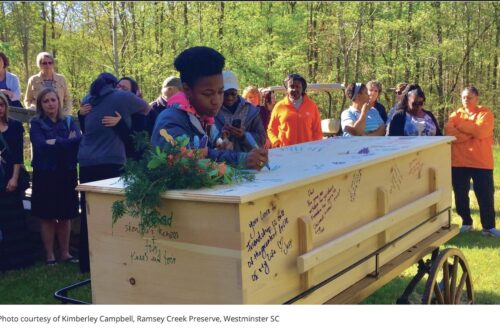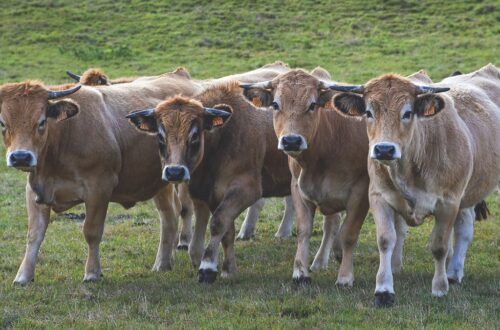An Adventure in Reforesting
A decade or so ago, I came across an article in the local paper about a retired school teacher who owned some land a couple of hours east of my city of Portland, Oregon, and spent his golden years planting trees. He had planted 10,000 trees up to that point, aiming to reforest a semidry area of land east of the Cascade mountains, where ponderosa pines flourished before the arrival of Europeans and had been mostly clearcut to create pasture. Something about the article resonated and stuck with me to this day. It was powerful to see an individual intentionally rewilding an area, giving it back to nature and pulling carbon out of the atmosphere at the same time.
Flash forward 10 years. The climate problem that, back then, was low on many of our priority lists is now a blaring air raid siren, as every year, we set records for heat and billion-dollar natural disasters. Sitting on our hands and waiting for the cavalry while these massive problems rage unchecked, seems like a poor choice, so my family has searched for the most impactful ways that we, as individuals, can address this crisis. We’ve electrified our home, bought an electric car, signed up for community solar, and tried to use energy more efficiently (with things like low-flow showerheads and hang drying clothes).
But we also know that building and transportation solutions aren’t enough. Project Drawdown promotes Land Sinks — “Plants and healthy ecosystems have an unparalleled capacity to absorb carbon through photosynthesis and store it in living biomass.” The story of that retired school teacher regularly returned to us, and reforesting became the next of our personal goals to address the challenge of our time in our own minuscule way. Studies show that reforestation has tremendous potential to help the climate crisis, with some researchers finding that we could sequester up to two-thirds of the necessary carbon, over the coming decades, by planting trillions of trees in a concerted effort to green our world.
The land
To fulfill our dream of reforestation, we first needed some land. The Portland Metro area has some of the most expensive housing prices in the United States. However, when we expanded our Zillow search to a two-hour driving radius, we found plenty of small parcels for sale under $50,000 (and many in the same area where the school teacher had planted trees). I imagine this phenomenon must be true across much of the United States and the world. Cities are expensive, but a lot of marginal, rural land (perfect for planting trees) is available for a fraction of urban land prices within easy driving distance of our homes.
Over a few years, my family explored many properties and settled on a few criteria:
• At least several acres in size.
• Less than $50,000.
• Mostly unforested, yet with trees nearby suggesting they could grow easily.
• Within two hours of our home.
• Off a publicly maintained road.
• Relatively flat.
• Mountain views for beauty and inspiration (okay, so there’s an emotional factor here beyond pure climate impact).
After searching, exploring backroads that definitely weren’t meant for small electric cars, researching, and thinking, in 2019, we found five acres near Goldendale, Washington, for $35,000. We went back several times over the next year and finally made an offer in early 2020. This property met all our criteria. It was cheap farmland with a line of trees along the east side, and it has spectacular views of Mount Hood and Mount Adams. We couldn’t believe our luck. We closed in August of 2020, a bright spot for our family in a dark pandemic year.
Enough hay for half a cow
For the past few decades, these five acres have been used to grow hay. When I asked the seller how much crop he had harvested annually on our land, he said that “the grass hay there is getting tired and has been averaging around ½ ton per acre.” I learned that “getting tired” is a way of saying that the soil nutrients have been eroded or depleted by constant farming and monoculture, which is the usual result of our modern systems of agriculture.
Since this farmer had been growing hay on four of our five acres, simple calculations indicate that he had been harvesting about 2 tons of hay a year. That’s enough hay to feed one cow for about 150 days (less than half a year). Feeding half a cow doesn’t seem like the “highest and best use” of land to me, especially when considering the alternative; the fact that we’re in a climate emergency and the land could host over a thousand trees that will sequester the gas causing all our problems for free.
So we’ll try growing a different crop. Rather than feeding one cow for half a year, we’ll plant ponderosa pines and white oaks, which currently line the far edge of the property and have been patiently waiting for an opportunity to return to their native habitat. Though these trees won’t grow as fast or as tall as the mighty fir forests on the west side of the mountains, we should be able to plant enough trees to pull about 150,000 lb of CO2 from the atmosphere over the next several decades and offer a small new home for wildlife. (An average American emits 40,000 lb of CO2 per year.)
Cleaning up the land
One of the first tasks was to get rid of 70 tires and a bunch of scrap metal on the property. The seller didn’t want to bother with it so gave us a discount to do it ourselves. Over a couple of days, we dug up the tires (dodging hornets that had made a home in one of them) and collected the rusting scrap metal. We paid a local to haul it away and recycle the metal. Who knows why, or for how long, this junk sat there, but it felt good to quickly spring into action and begin to beautify a landscape.
Wildlife
One of the co-benefits of rewilding these five acres is creating space for wildlife. Over 200 wildlife species and hundreds of insect species are associated with the Oregon white oaks that we’ll plant in significant numbers. We’ve seen eagles overhead and deer tracks in the mud. I’ll be curious to see what other types of animals and insects we see back on the land as the forest regrows.
In the several months of owning the property, we city slickers have already gotten a taste of the wildlife, which isn’t human-friendly. In May, we found a tick on our picnic blanket. In September, on our first campout, we saw a 6-foot long bull snake slithering across the property. At first, we were convinced it was a rattlesnake (they live at nearby Klickitat River), but our neighbor reassuringly confirmed it to be a non-venomous bull snake. Rewilding land will mean challenging ourselves to coexist with all creatures — majestic and bloodsucking, cute and venomous.
Planting
A lot remains to be discovered as we embark on this adventure of reforesting five acres.
One key question is, what is the best way to replant a forest? Should we actively plant trees or let nature reseed the space herself? I’ve read some articles that say nature will do it faster and better than we can, but the urge to help out is strong. Replanting feels bidirectional in its goodness; we’re helping the planet, along with ourselves. Planting trees offers us an avenue to physically participate in solutions to our carbon crisis and change a blank landscape into something vibrant and living.
Each time we’ve gone to the land this past fall and winter, I’ve gathered up white oak acorns from trees on the property and planted them in shallow holes in an ever-expanding area to see if they’ll sprout the following spring.
I’m also digging up crowded ponderosa pine seedlings and planting them further and further from the forested area into the open field. This fall, we’ll be a little more rigorous with our planting program with help from the US Department of Natural Resources, whose EQIP program provides technical assistance and funding to help landowners plant and maintain trees. Agronomist Sergio Paredes met us at our land last week to determine that the property is a good fit for the program and offer guidance on the planting strategy. He confirmed we found the right spot by saying, “this property is as good as it gets for reforesting.”
Plenty of Questions
Another open question in our minds involves fires. As the West Coast blazes get more destructive each year, we’re wondering what reforesting an area will look like in this time of mega-fires. Are we planting trees that will be consumed for a massive fire in years to come? Is there a way to reforest that reduces fire risk?
Finally, we’re curious what our new rural neighbors will think as we plant trees and turn farmland into forestland. Most have been friendly thus far and have kindly requested we don’t obstruct their views. Can a Tesla-driving family from the city restore a little slice of forest in harmony with a rural community of Trump signs and pickup trucks?
Final Thoughts
Planting trees is an essential carbon drawdown strategy, and there’s an abundance of inexpensive, marginal land like ours (perhaps feeding something like half a cow per year) that could be restored to carbon-sequestering, wildlife-protecting forest. How many of us, like my family, or the retired teacher who inspired us, could help green our earth by buying land and planting trees, stitching together one small plot of forest at a time?
Hopefully, this forest will stay in the family for generations and make their world a better place.
My nonprofit organization Electrify Now has a webinar on forests as a strategy to sequester carbon.
Huge thanks to my wife of ten years, Naomi Cole, who provided exactly 252 edits to this article and who is my life partner in this land adventure along with many others partner in this land adventure along with many others.
Joe Wachunas lives in Portland, Oregon, and works for the nonprofit Forth, which promotes electric transportation. He is also involved with Electrify Now because he believes that electrifying everything, from transportation to homes, is the quickest path to an equitable, clean energy future. And of course, Joe and his family live in an all-electric home and drive an EV.







One Comment
Pingback: